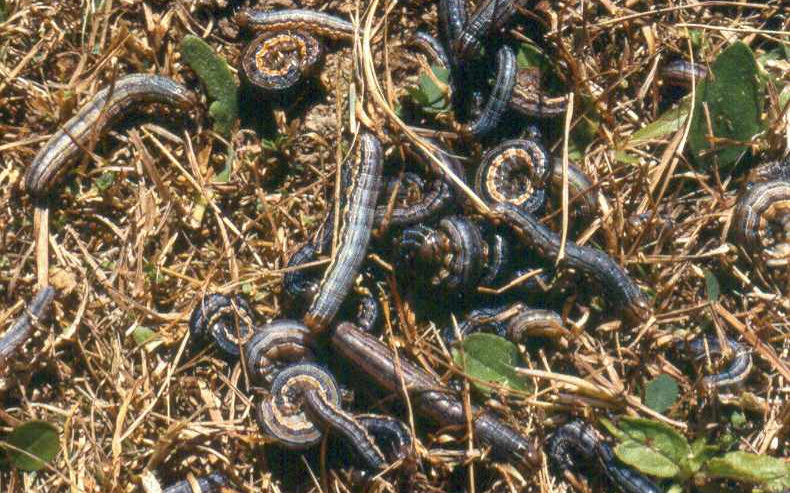
ORONO, Maine — Farmers throughout Maine should be on the lookout for a potential outbreak of armyworms (Pseudaletia unipuncta).
The devastating pest normally feeds at night and much damage can occur before they mature. The preferred foods are grasses including corn, grains and perennial forage grasses. Armyworms will feed on other plants if grasses are unavailable. Once the grass has been devoured, the caterpillars will move in a mass to other fields.
UMaine Extension has received several reports of armyworms in the state, and in New Hampshire and Vermont.
“The last time we had a large outbreak was in 2001,” says Extension professor Richard Kersbergen. “That year, we also had a cool moist spring, similar to what we have experienced this year.”
While the reports are preliminary, it is important for farmers to inspect their fields. Often, once damage is noticed, the pest has already devoured a considerable amount of the crop.
The adult moths of armyworms lay their eggs in grassy areas — whether stray clumps of winter rye, grassy weeds in cornfields or unharvested hayfields and those in regrowth after a recent harvest.
Ragged feeding on leaves and sawdust-like frass are indications of armyworms. Local wildlife also can be indicators, including unusually active flocks of crows in a field. Damage from large infestations can appear any time until June 30.
Early detection is essential. By early July when infestations are at their peak, it will be too late for treatment.
UMaine Extension has a fact sheet on armyworms that will help provide some additional information and identification. It is available online at extension.umaine.edu/ipm/ipddl/publications/5040e.







